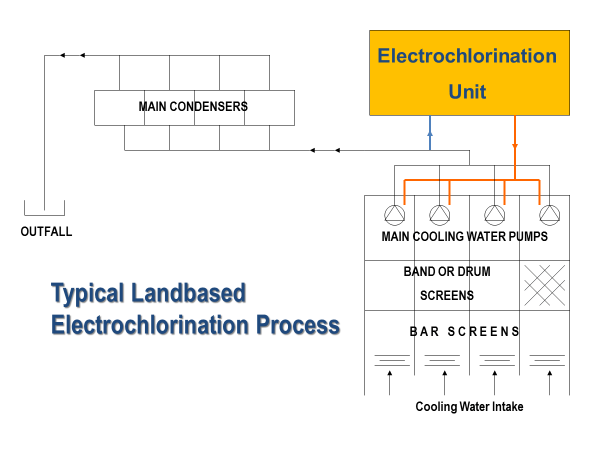Power Generation
More than 70% of the earth’s surface is covered by seawater. This provides for an abundant supply of cooling water for coastal power stations, desalination plants and chemical plants. Yet, plant managers, engineers, and operators face the challenge of keeping seawater intake piping systems and heat transfer surfaces from being attacked by bio-species lingering in the seas. Macro-fouling (mussels, clams, oysters) and micro-fouling (bacteria, slime, algae) form deposits on condenser tubes, equipment, and piping systems resulting in unexpected plant shutdowns and losses in production.
Chlorine can be used to kill such species before the seawater enters the process, but gaseous chlorine is a lethal chemical that requires strict safety and regulatory compliance. Sodium hypochlorite, as a biocide or disinfectant, is accepted around the world as a proven and effective means of treating water and is a safer and more cost-effective alternative to using chlorine gas. Sodium hypochlorite, in low concentrations, can be handled nearly as easily as water. However, transportation of sodium hypochlorite can be expensive and when stored, the product degrades over time to reduce its effectiveness.
Electrochlorination is the process of generating sodium hypochlorite on site using mainly salt, electricity, and water in the exact quantity needed for effective bio-fouling control.

